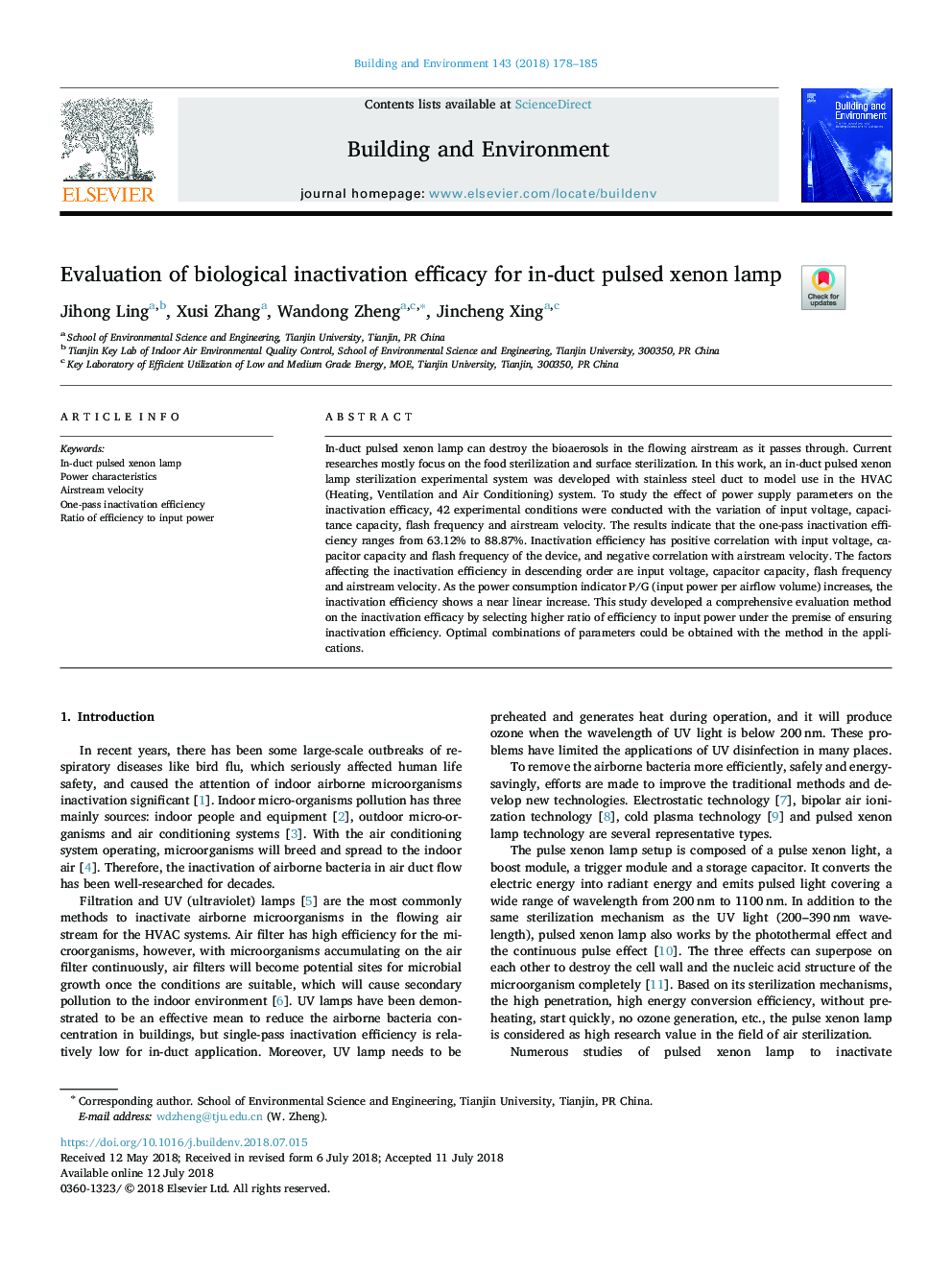| Article ID | Journal | Published Year | Pages | File Type |
|---|---|---|---|---|
| 6696515 | Building and Environment | 2018 | 8 Pages |
Abstract
In-duct pulsed xenon lamp can destroy the bioaerosols in the flowing airstream as it passes through. Current researches mostly focus on the food sterilization and surface sterilization. In this work, an in-duct pulsed xenon lamp sterilization experimental system was developed with stainless steel duct to model use in the HVAC (Heating, Ventilation and Air Conditioning) system. To study the effect of power supply parameters on the inactivation efficacy, 42 experimental conditions were conducted with the variation of input voltage, capacitance capacity, flash frequency and airstream velocity. The results indicate that the one-pass inactivation efficiency ranges from 63.12% to 88.87%. Inactivation efficiency has positive correlation with input voltage, capacitor capacity and flash frequency of the device, and negative correlation with airstream velocity. The factors affecting the inactivation efficiency in descending order are input voltage, capacitor capacity, flash frequency and airstream velocity. As the power consumption indicator P/G (input power per airflow volume) increases, the inactivation efficiency shows a near linear increase. This study developed a comprehensive evaluation method on the inactivation efficacy by selecting higher ratio of efficiency to input power under the premise of ensuring inactivation efficiency. Optimal combinations of parameters could be obtained with the method in the applications.
Keywords
Related Topics
Physical Sciences and Engineering
Energy
Renewable Energy, Sustainability and the Environment
Authors
Jihong Ling, Xusi Zhang, Wandong Zheng, Jincheng Xing,
